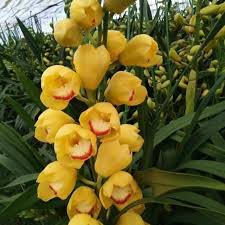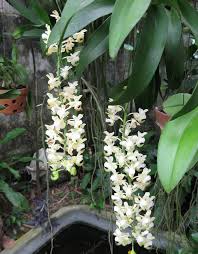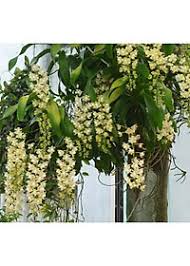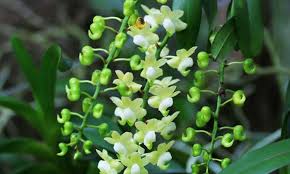
Sato Cymbidium orchids are cherished not only for their stunning beauty but also for their symbolism of elegance and prosperity. These orchids have become increasingly popular in various cultures, especially during special occasions such as weddings, anniversaries, and holidays. However, keeping Sato Cymbidium orchids blooming perfectly for these events requires proper care and attention. This article provides a comprehensive guide on tips to ensure your Sato Cymbidium orchids bloom beautifully just in time for your celebrations.
## 1. Understanding Sato Cymbidium Orchids
Before diving into the care tips, it’s essential to understand what makes Sato Cymbidium orchids unique. Native to Southeast Asia, these orchids thrive in various environments and are characterized by their lush foliage and vibrant flowers. They typically bloom in late winter to early spring, but with the right care, their blooming period can be extended or timed to coincide with special occasions.
### 1.1 Unique Features of Sato Cymbidium Orchids
Sato Cymbidium orchids are known for their robust nature, making them relatively easy to care for compared to other orchid varieties. They come in various colors, including white, pink, yellow, and green, each carrying its significance. The flowers can last several weeks, making them a favorite for decorating homes and venues during celebrations.
### 1.2 Cultural Significance
In many cultures, orchids symbolize love, beauty, and strength. In particular, Sato Cymbidium orchids are often associated with good luck and prosperity. This cultural significance further enhances their popularity during festive occasions, as they are believed to bring positive energy and joy.
## 2. Timing the Bloom
One of the most critical aspects of ensuring Sato Cymbidium orchids bloom at the right time is understanding their growth cycle and bloom triggers.
### 2.1 Know the Blooming Cycle
Typically, Sato Cymbidium orchids bloom in the late winter to early spring, with the peak blooming period varying by variety and local climate. Understanding this cycle is essential for timing your care techniques.
#### 2.1.1 Environmental Factors
Temperature, light, and humidity are key factors that influence the blooming cycle. The ideal temperature for Sato Cymbidium orchids is between 65°F to 75°F (18°C to 24°C) during the day and around 55°F to 65°F (13°C to 18°C) at night. Ensuring these conditions in the weeks leading up to your event will help promote healthy blooms.
### 2.2 Manipulating Conditions for Bloom Timing
To manipulate the blooming schedule of your orchids, consider adjusting environmental conditions:
#### 2.2.1 Light Exposure
Sato Cymbidium orchids require plenty of bright, indirect sunlight. However, they should be protected from harsh afternoon sunlight, which can scorch the leaves. During the weeks leading up to your event, gradually increase the amount of light your orchids receive to encourage blooming.
#### 2.2.2 Temperature Adjustments
A slight temperature drop during the night can trigger blooming in Sato Cymbidium orchids. If possible, reduce the nighttime temperature in the weeks leading up to the event. This temperature fluctuation can simulate natural conditions that promote flowering.
## 3. Proper Watering Techniques
Watering is crucial for the health of Sato Cymbidium orchids and can significantly impact their blooming potential.
### 3.1 Watering Frequency
Sato Cymbidium orchids prefer to be kept slightly moist but not soggy. Water them thoroughly when the top inch of the potting medium feels dry. In general, this may mean watering once a week or every five to seven days, but this can vary based on environmental conditions.
### 3.2 Water Quality
Using the right water quality is essential for the health of your orchids. Tap water can contain chemicals that may harm the delicate roots of orchids. Instead, consider using distilled water, rainwater, or filtered water. Always ensure that the water temperature is room temperature when watering.
### 3.3 Signs of Overwatering or Underwatering
Be attentive to the signs of overwatering or underwatering, as both can hinder blooming. Signs of overwatering include yellowing leaves and soft, mushy roots, while underwatering can cause the leaves to wrinkle or shrivel. Adjust your watering routine accordingly to keep the orchids healthy and promote blooming.
## 4. Nutrient Management
Providing your Sato Cymbidium orchids with the right nutrients is essential for encouraging healthy blooms.
### 4.1 Fertilizing Schedule
Fertilizing orchids appropriately can help stimulate growth and blooming. During the growing season (spring and summer), feed your orchids with a balanced, water-soluble fertilizer every two to four weeks. As the blooming season approaches, consider switching to a fertilizer higher in phosphorus, which promotes flowering.
### 4.2 Fertilizer Application
When applying fertilizer, dilute it according to the package instructions. Avoid over-fertilizing, as this can lead to root burn and poor bloom production. Additionally, it’s best to apply fertilizer after watering, as this helps the nutrients penetrate the potting medium effectively.
### 4.3 Special Nutritional Needs
In addition to regular fertilization, Sato Cymbidium orchids may benefit from occasional applications of calcium and magnesium. These nutrients support strong stem growth and vibrant blooms, ensuring the flowers are at their best for your special occasion.
## 5. Choosing the Right Potting Medium
The potting medium you choose for your Sato Cymbidium orchids plays a significant role in their health and blooming potential.
### 5.1 Orchid-Specific Potting Mix
Using an orchid-specific potting mix is crucial for promoting proper drainage and aeration. Look for a mix that includes bark, perlite, and sphagnum moss, as these materials allow for good air circulation and prevent water from pooling at the roots.
### 5.2 Repotting Considerations
If your Sato Cymbidium orchids are root-bound or have outgrown their current pot, consider repotting them a few months before your event. This process can help promote healthy growth and blooming. When repotting, be sure to use fresh potting medium to provide the best environment for root development.
### 5.3 Choosing the Right Pot Size
Select a pot that is appropriately sized for your orchids. A pot that is too small can restrict root growth, while a pot that is too large may retain too much moisture, leading to root rot. Generally, choose a pot that is one size larger than the current one to provide ample room for growth.
## 6. Light and Humidity Requirements
Providing the right light and humidity levels is essential for maintaining healthy Sato Cymbidium orchids.
### 6.1 Optimal Light Conditions
As mentioned earlier, Sato Cymbidium orchids thrive in bright, indirect light. Placing them near a window with filtered sunlight is ideal. If natural light is insufficient, consider supplementing with grow lights, especially during the winter months.
### 6.2 Humidity Levels
These orchids prefer a humidity level of 50% to 70%. During dry months or in heated indoor environments, you may need to increase humidity levels. Consider using a humidity tray filled with water and pebbles, or misting the orchids regularly.
### 6.3 Monitoring Conditions
Using a hygrometer to monitor humidity levels can help you maintain optimal conditions for your orchids. Adjust humidity levels as needed to create a conducive environment for blooming.
## 7. Disease and Pest Management
Keeping Sato Cymbidium orchids healthy is vital for ensuring they bloom beautifully for special occasions. Being proactive in managing potential diseases and pests is key to maintaining their health.
### 7.1 Common Pests
Orchids can be susceptible to pests such as aphids, spider mites, and mealybugs. Regularly inspect your orchids for signs of infestation, such as sticky residue, webbing, or visible insects. If you notice any pests, treat them promptly with insecticidal soap or neem oil.
### 7.2 Disease Prevention
Preventing diseases is also crucial for keeping orchids healthy. Ensure proper air circulation around your orchids to prevent fungal infections. Avoid wetting the foliage when watering to reduce the risk of rot and mold.
### 7.3 Quarantine New Plants
If you acquire new Sato Cymbidium orchids, quarantine them for a few weeks before introducing them to your existing collection. This practice can help prevent the spread of pests and diseases.
## 8. Arranging for Special Occasions
Once your Sato Cymbidium orchids are healthy and blooming, arranging them beautifully for special occasions is the next step.
### 8.1 Creating Stunning Bouquets
Sato Cymbidium orchids make for stunning bouquets, either as a standalone flower or in combination with other blooms. When creating bouquets, consider the color palette and floral theme of the occasion.
#### 8.1.1 Combining with Other Flowers
Sato Cymbidium orchids pair well with various flowers, including roses, lilies, and peonies. Create arrangements that complement the colors and styles of the event. Using greenery as filler can add texture and depth to the bouquet.
### 8.2 Floral Centerpieces
Using Sato Cymbidium orchids as centerpieces can elevate the aesthetic of any gathering. Consider using tall vases or unique containers to showcase the height and elegance of the orchids.
### 8.3 Corsages and Boutonnieres
Sato Cymbidium orchids can also be used to create beautiful corsages and boutonnieres for special occasions. These floral accessories add a touch of sophistication and can be personalized with ribbons or other decorative elements.
## 9. Conclusion
Keeping Sato Cymbidium orchids blooming beautifully for special occasions requires careful planning and attention to detail. By understanding their growth cycle, providing optimal care, and arranging them thoughtfully, you can ensure these elegant flowers are at their best for your celebrations. Whether for a wedding, anniversary, or holiday, Sato Cymbidium orchids will undoubtedly add beauty and elegance to your special events, making them truly memorable. With the right tips and techniques, you can enjoy the stunning blooms of these orchids and create lasting memories for yourself and your guests.
# Tips for Keeping Sato Cymbidium Orchids Blooming for Special Occasions: Part 2
In the first part of this guide, we discussed essential aspects of caring for Sato Cymbidium orchids, including understanding their blooming cycle, proper watering techniques, nutrient management, and creating the ideal environment. In this second part, we will delve deeper into advanced care strategies, troubleshooting common issues, and the aesthetic presentation of Sato Cymbidium orchids, ensuring they bloom beautifully for your special occasions.
## 1. Advanced Care Strategies
While basic care is crucial, advanced strategies can significantly enhance the blooming potential of your Sato Cymbidium orchids. Here are some expert tips to maximize their performance leading up to your event.
### 1.1 Temperature Regulation Techniques
Sato Cymbidium orchids respond positively to specific temperature fluctuations. In addition to the temperature adjustments mentioned earlier, here are some techniques to help control temperatures effectively.
#### 1.1.1 Night Temperature Drops
As mentioned previously, lowering nighttime temperatures can stimulate blooming. If you’re in a warmer climate, consider placing the orchids in a cooler room at night or using air conditioning to create a temperature difference. If you have access to a thermostat, program it to drop the temperature slightly during the night.
#### 1.1.2 Use of Fans
Introducing fans can help regulate temperature and improve air circulation around your orchids. This increased airflow not only keeps temperatures stable but also helps prevent fungal diseases that thrive in stagnant air. Be sure to direct the airflow indirectly to avoid damaging the delicate blooms.
### 1.2 Strategic Lighting Placement
Lighting plays a crucial role in the overall health and blooming of Sato Cymbidium orchids. Here are strategies to maximize light exposure:
#### 1.2.1 Adjustable Grow Lights
If natural light is insufficient, consider investing in adjustable grow lights. These lights can be positioned to provide the necessary intensity and spectrum of light for the orchids. Using full-spectrum LED grow lights will ensure that your orchids receive the right wavelengths for healthy growth and flowering.
#### 1.2.2 Rotate Plants Regularly
Rotating your Sato Cymbidium orchids every few days can help ensure even exposure to light, promoting symmetrical growth. This practice is especially important if your orchids are positioned near a window, where light may only come from one side.
### 1.3 Humidity Control Techniques
Humidity is essential for the health of Sato Cymbidium orchids, and maintaining the right levels can be a challenge, especially in dry indoor environments. Here are some methods to control humidity effectively:
#### 1.3.1 Using Humidifiers
Investing in a quality humidifier can be an effective way to increase humidity levels in your orchid environment. Consider placing the humidifier near your orchids, and monitor the humidity levels using a hygrometer to maintain optimal conditions.
#### 1.3.2 Misting Techniques
Misting your orchids regularly can also help maintain humidity levels. However, it’s essential to mist in moderation to avoid water pooling in the leaves, which can lead to rot. A good practice is to mist in the early morning so the moisture can evaporate throughout the day.
## 2. Troubleshooting Common Issues
Even with the best care, issues may arise that could affect the blooming of your Sato Cymbidium orchids. Here are some common problems and their solutions:
### 2.1 Leaf Yellowing and Drop
Yellowing leaves can indicate several issues, including overwatering, underwatering, or nutrient deficiencies.
#### 2.1.1 Diagnosis
To diagnose the cause of yellowing leaves, check the potting medium’s moisture level. If it feels too wet, reduce watering and ensure proper drainage. If the medium is dry, adjust your watering schedule. Additionally, inspect the fertilizer schedule to ensure the orchids receive adequate nutrients.
#### 2.1.2 Solutions
If nutrient deficiency is suspected, consider applying a balanced fertilizer or one specifically formulated for orchids. Yellowing leaves can also result from exposure to too much direct sunlight; if this is the case, relocate your orchids to a spot with filtered light.
### 2.2 Poor Flowering or Delayed Blooms
Sometimes, orchids may fail to bloom or have delayed flowering. This issue can arise due to improper care or environmental stressors.
#### 2.2.1 Assessment
Evaluate the environmental conditions, including light exposure, temperature fluctuations, and humidity levels. If these conditions are not optimal, make necessary adjustments to promote blooming.
#### 2.2.2 Fertilization Adjustments
If your orchids are not blooming despite optimal conditions, consider adjusting your fertilization regimen. Switch to a bloom booster fertilizer high in phosphorus to stimulate flower production.
### 2.3 Pest Infestation
Pests can pose significant threats to the health and blooming of Sato Cymbidium orchids. Common pests include aphids, spider mites, and scale insects.
#### 2.3.1 Identification
Regularly inspect your orchids for signs of pests, such as sticky residue, webbing, or visible insects. Catching infestations early is crucial for effective treatment.
#### 2.3.2 Treatment Options
If you detect pests, treat your orchids promptly with insecticidal soap or neem oil. Be sure to follow the manufacturer’s instructions for safe and effective application. Additionally, isolating infested plants can prevent the spread of pests to other orchids.
## 3. Preparing for the Special Occasion
Once you’ve addressed any potential issues and implemented advanced care strategies, it’s time to prepare your Sato Cymbidium orchids for the upcoming event.
### 3.1 Pruning for Presentation
Pruning your orchids can help enhance their appearance and ensure they look their best for your special occasion.
#### 3.1.1 Removing Dead or Damaged Leaves
Carefully remove any dead or damaged leaves to improve the overall appearance of your orchids. This step also helps prevent disease and promotes healthy growth.
#### 3.1.2 Trimming Flower Stems
If some flower stems are wilting or fading, consider trimming them to encourage fresh blooms. Always use sterilized pruning shears to prevent the spread of pathogens.
### 3.2 Creating Stunning Displays
When arranging your Sato Cymbidium orchids for your event, consider various display options that highlight their beauty.
#### 3.2.1 Floral Arrangements
Sato Cymbidium orchids are stunning in arrangements, whether in bouquets or centerpieces. When designing floral arrangements, consider the color palette and overall theme of your event.
#### 3.2.2 Accent Pieces
In addition to larger arrangements, consider using Sato Cymbidium orchids as accent pieces throughout your venue. Small vases or individual blooms can add elegance and charm to tables, entryways, or reception areas.
## 4. Additional Tips for Longevity and Freshness
To ensure that your Sato Cymbidium orchids last throughout the event and beyond, here are some additional tips for maintaining their freshness.
### 4.1 Watering Prior to the Event
Water your orchids thoroughly the day before the event. This practice helps hydrate the blooms and keeps them fresh during the celebration. However, avoid overwatering to prevent sogginess.
### 4.2 Keeping Blooms Cool
During the event, keep the orchids in a cool location away from direct sunlight and heat sources. Extreme temperatures can cause blooms to wilt prematurely.
### 4.3 Providing Proper Care After the Event
After the event, continue caring for your Sato Cymbidium orchids to encourage their longevity. Adjust watering, lighting, and humidity levels as needed to maintain their health.
### 4.4 Repurposing Blooms
Consider repurposing leftover Sato Cymbidium blooms after the event. These flowers can be used in home décor or given as gifts to guests, allowing everyone to enjoy their beauty long after the celebration.
## 5. Conclusion
Ensuring that your Sato Cymbidium orchids bloom beautifully for special occasions requires a combination of proper care, advanced strategies, and thoughtful preparation. By understanding their unique needs and addressing common challenges, you can create a stunning display that enhances the ambiance of your event. With these tips, your Sato Cymbidium orchids will undoubtedly be the centerpiece of any celebration, bringing joy and beauty to the occasion. With attentive care and attention to detail, you can create lasting memories for yourself and your guests, all while enjoying the elegance of these exquisite orchids.


